We tend to think of the world of Japanese synthesizers as dominated by the Big Three: Roland, Yamaha, and Korg. While all of them were present and accounted for during the heyday of the analog synthesizer, the 1970s also saw a number of other Japanese companies make a play for the market. In fact, it was something of a "Wild Wild East"—outfits came and went, but sadly most were gone by the 1980s.
History is told by the winners and the losers are often forgotten, or relegated to footnotes at the bottom of academic papers. With that in mind, let’s revive some of the lost lore and instruments of the day. Collectors, take note: many of these have not yet hit the kinds of high prices that the more well-known Japanese instruments of the time currently command.
Hillwood: Japan’s First Synthesizer?
Common knowledge states that Japan’s first synthesizer was the Korg MiniKorg-700. Released in the spring of 1973, it started the country’s local synth race, which was later joined by Roland and its SH-1000 the same year, and then Yamaha in 1974 with the SY-1—except that this isn’t strictly true. Hillwood may have got there first with its Blue Comets 1973.

Released at roughly the same time as the MiniKorg—possibly even by a matter of a few weeks' difference according to the musical instrument trade magazines of the time—the monophonic Blue Comets 1973 sported what was to become a common layout for early Japanese synths: a keyboard on the right and control panel on the left. However, rather than having preset tabs across the bottom, it featured rocker switches along the top. By combining the switches with the slider controls for envelope, filter and modulation, you could create a variety of sounds.
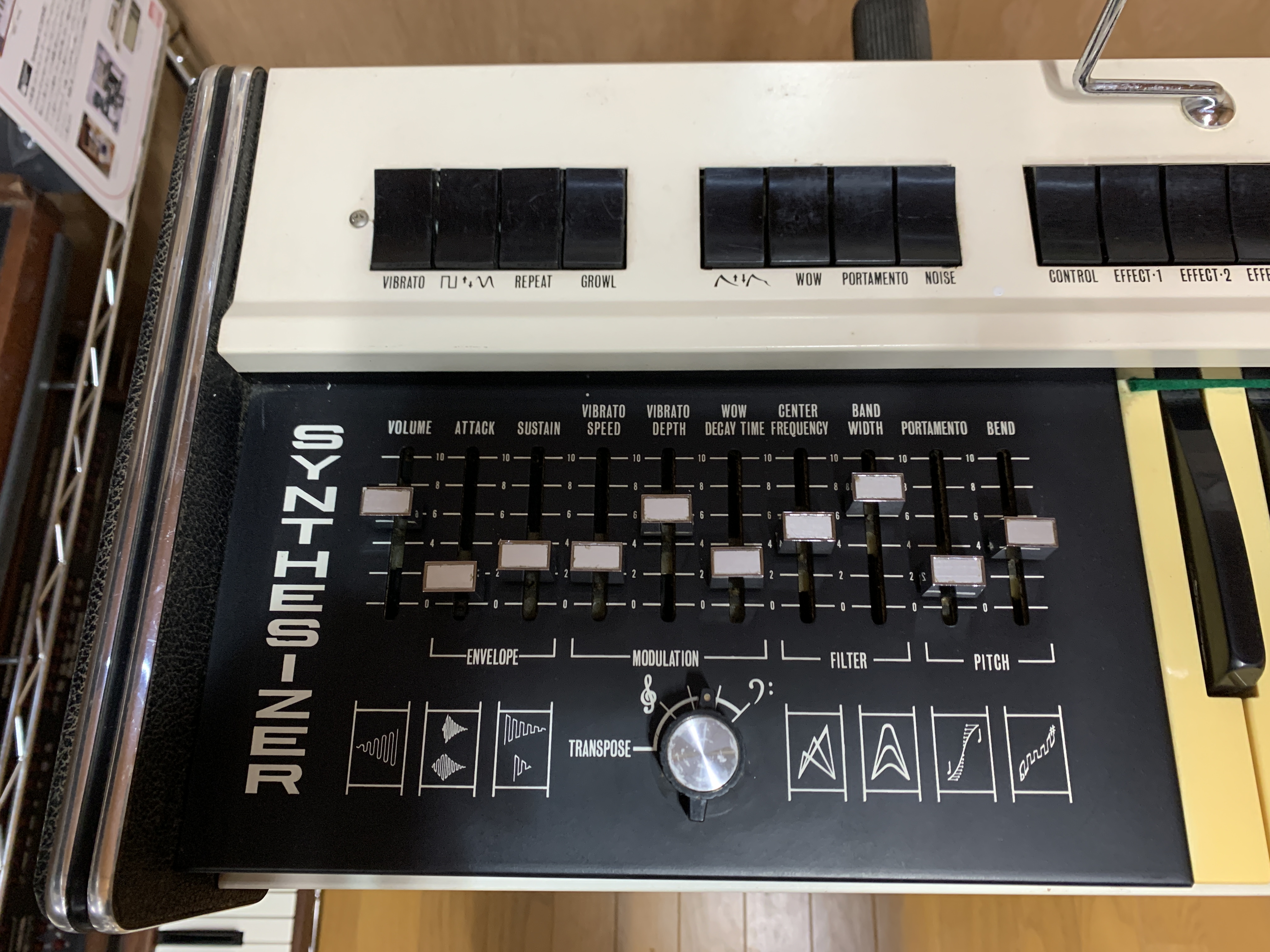
Blue Comets 73 was the brainchild of Kazuo Morioka, founder of Hillwood (the literal English translation of his last name). By all accounts, Morioka was a fascinating man who ran his company in unique (and often litigious) ways. He badged his instruments with up to four different brand names (Hillwood, Pulser, Firstman and Multivox) and often got in trouble for allegedly copying Roland’s circuits.
He was also all about marketing: the name "Blue Comets" was a reference to a popular Japanese rock combo of the time—it would be like Moog calling their Minimoog "the Strawbs 71" or something. After the runaway success of YMO in the late ‘70s, he started his own synth pop group, Cosmic, and had his teenage daughter sing and play drums, all so he could display his products on stage.
Multivox, Pulser and Firstman: Chasing Names
There were way too many Hillwood-associated instruments to cover (someone needs to write a book about him and his company!) but here are some worth looking into.Morioka often sold the same instruments with different company names on them, so things can get a little confusing. And while Multivox was an American company that rebadged Japanese products like Morioka’s or Ace Tone's, Multivox-branded synths were also confusingly sold in Japan.
Three years after the Blue Comets 73, Hillwood released the SY-1800, and if you think the name sounds like a cross between the Yamaha SY-1 and Roland SH-2000, you’re not far off the mark. As a preset synth with colorful push buttons along the bottom and basic synth parameter controls on the left, it was clearly meant to compete in Japan’s then-crowded preset synth market.
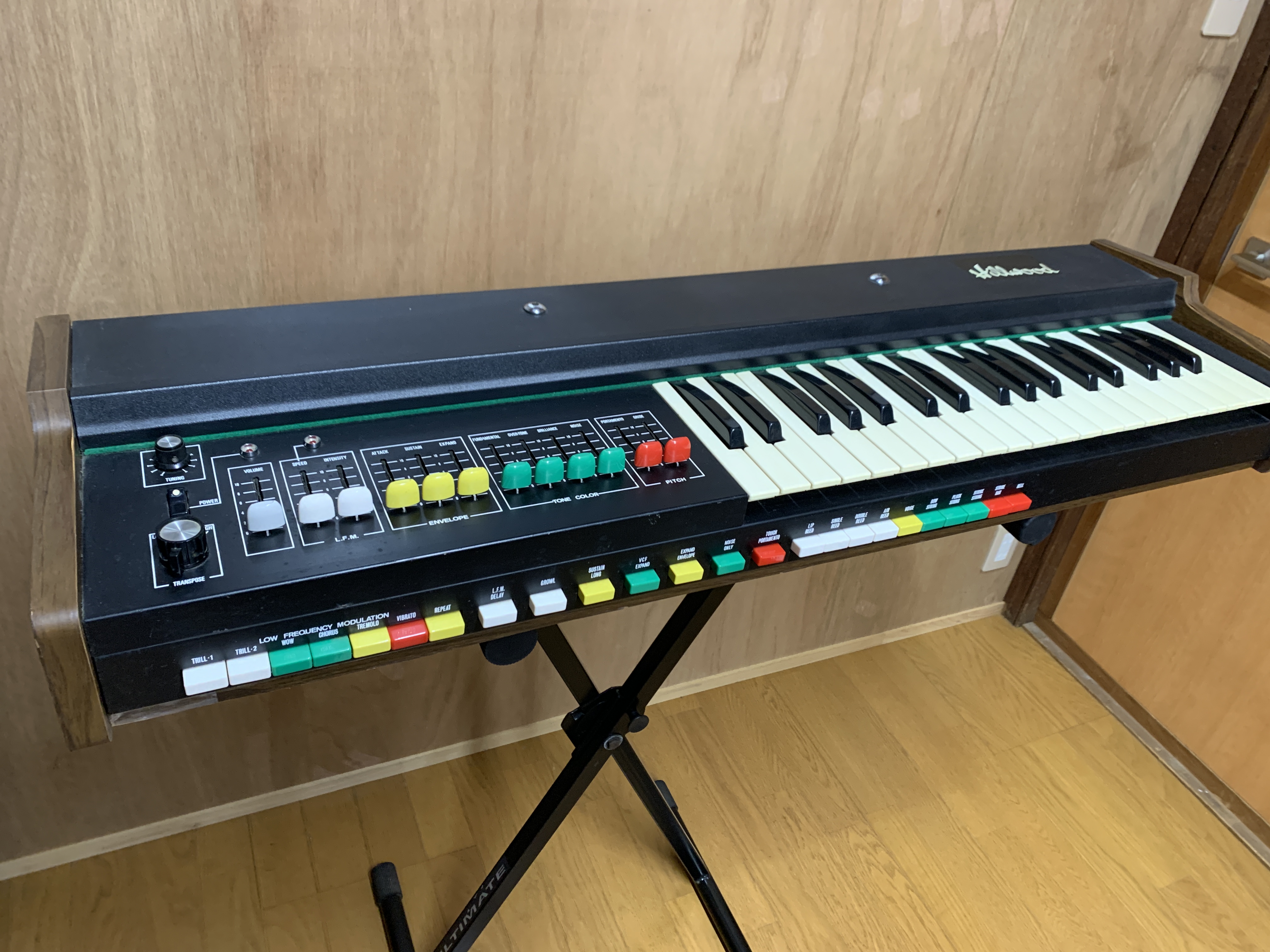
Another preset entry was the Multivox MX-880 Duo—this one was done by request for Multivox, with the US company shouldering the responsibility for the SH-2000 patent encroachments. The Duo in the name refers to its two oscillators, with a slider determining how the tuning of the oscillators played out.
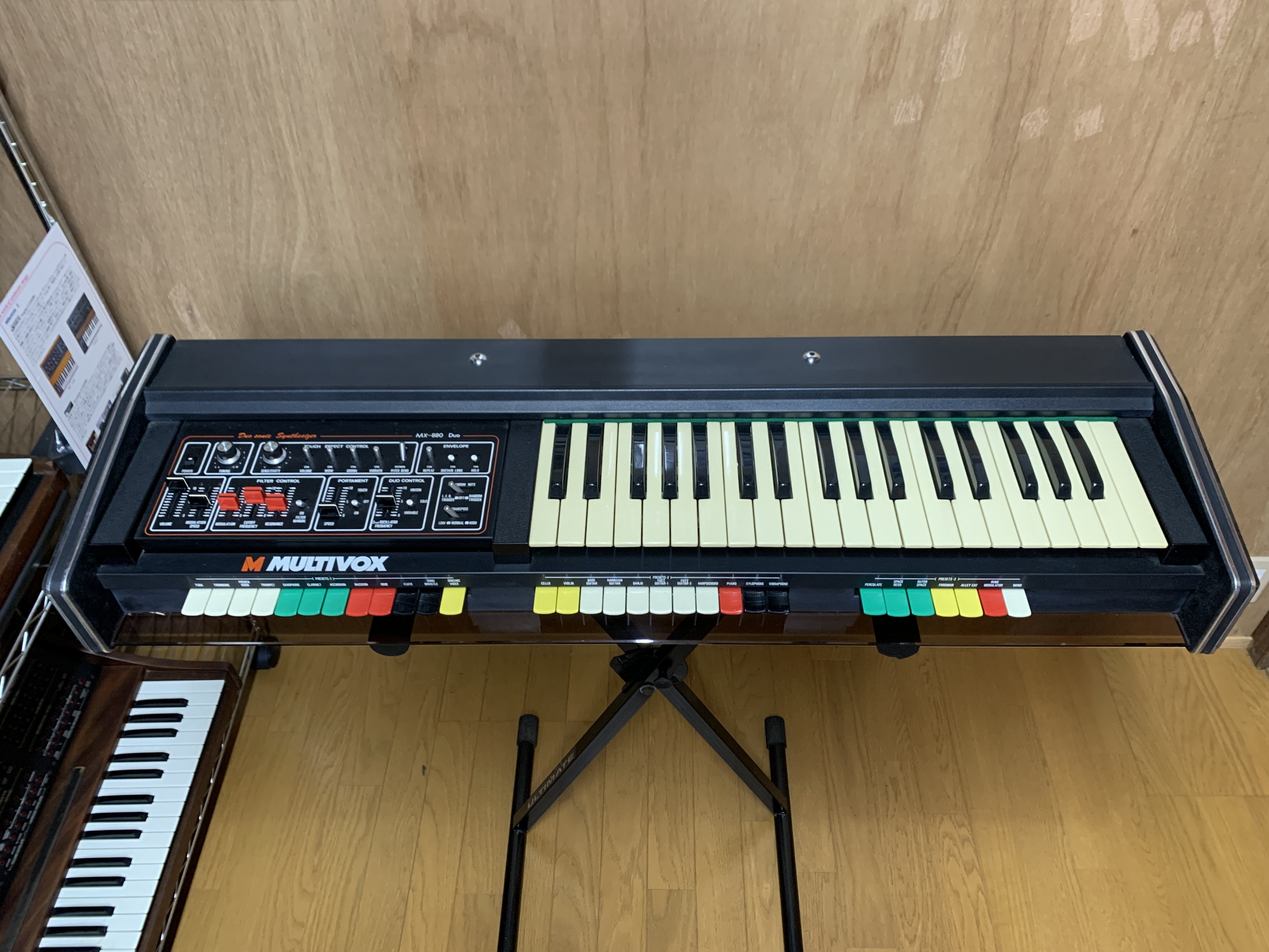
By the late ‘70s, everyone wanted polyphony. Combination string machine/synthesizers were all the rage, such as the Korg Trident and ARP Quadra. Multivox/Hillwood seemed to have the latter in mind when they made the MX-3000, a beast with a bass section, solo monophonic synth, and polyphonic string section.
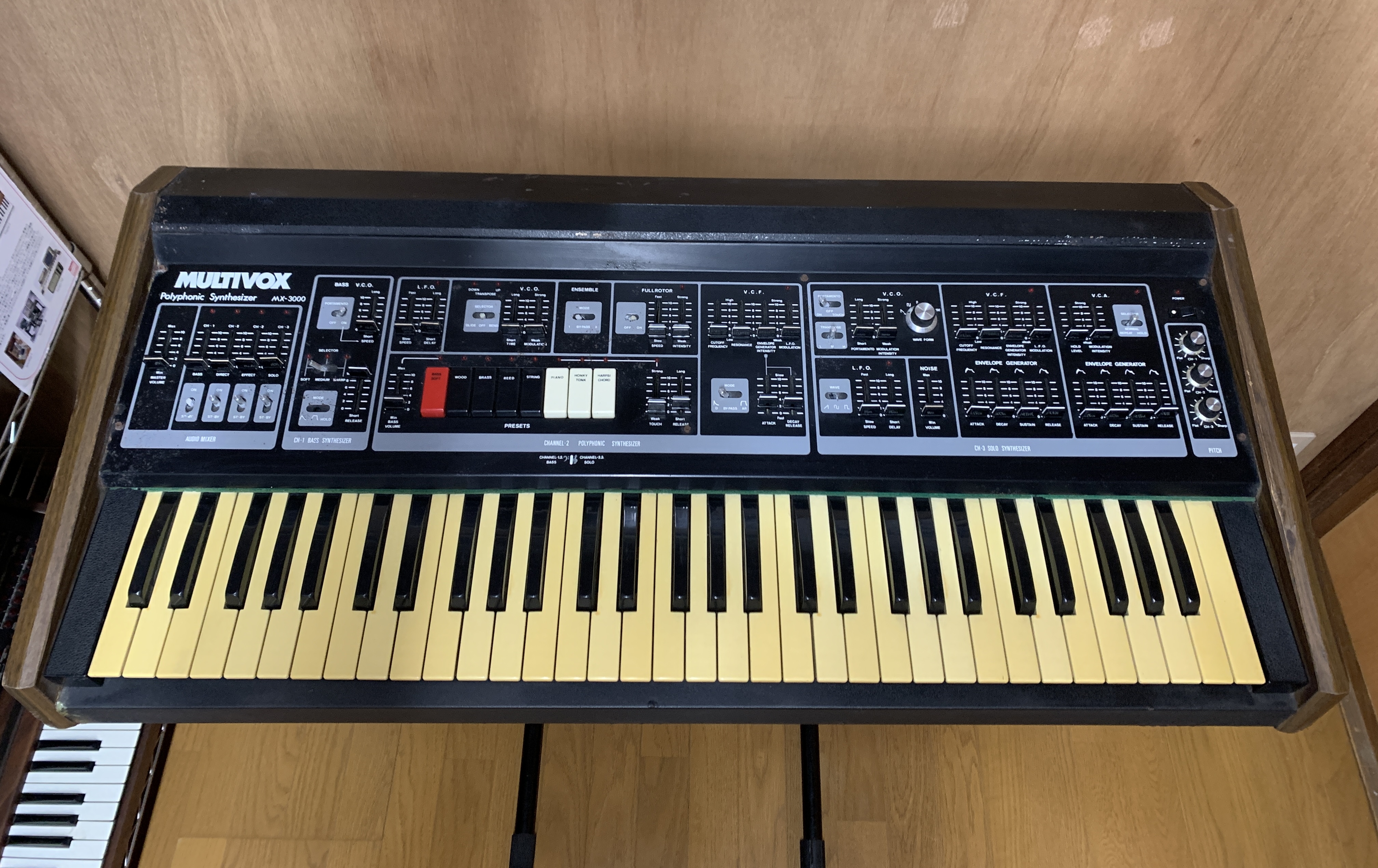
Speaking of string synths, 1980 saw Morioka release the MX-65 under the name "Pulser". Meant to compete with late-period, ensemble-fueled string synths like Roland’s RS-09 and the Yamaha SK-10, the MX-65 had flexible filter and envelope parameters that allowed for piano, clavinet, and honky tonk sounds alongside the expected string, brass and organ presets.
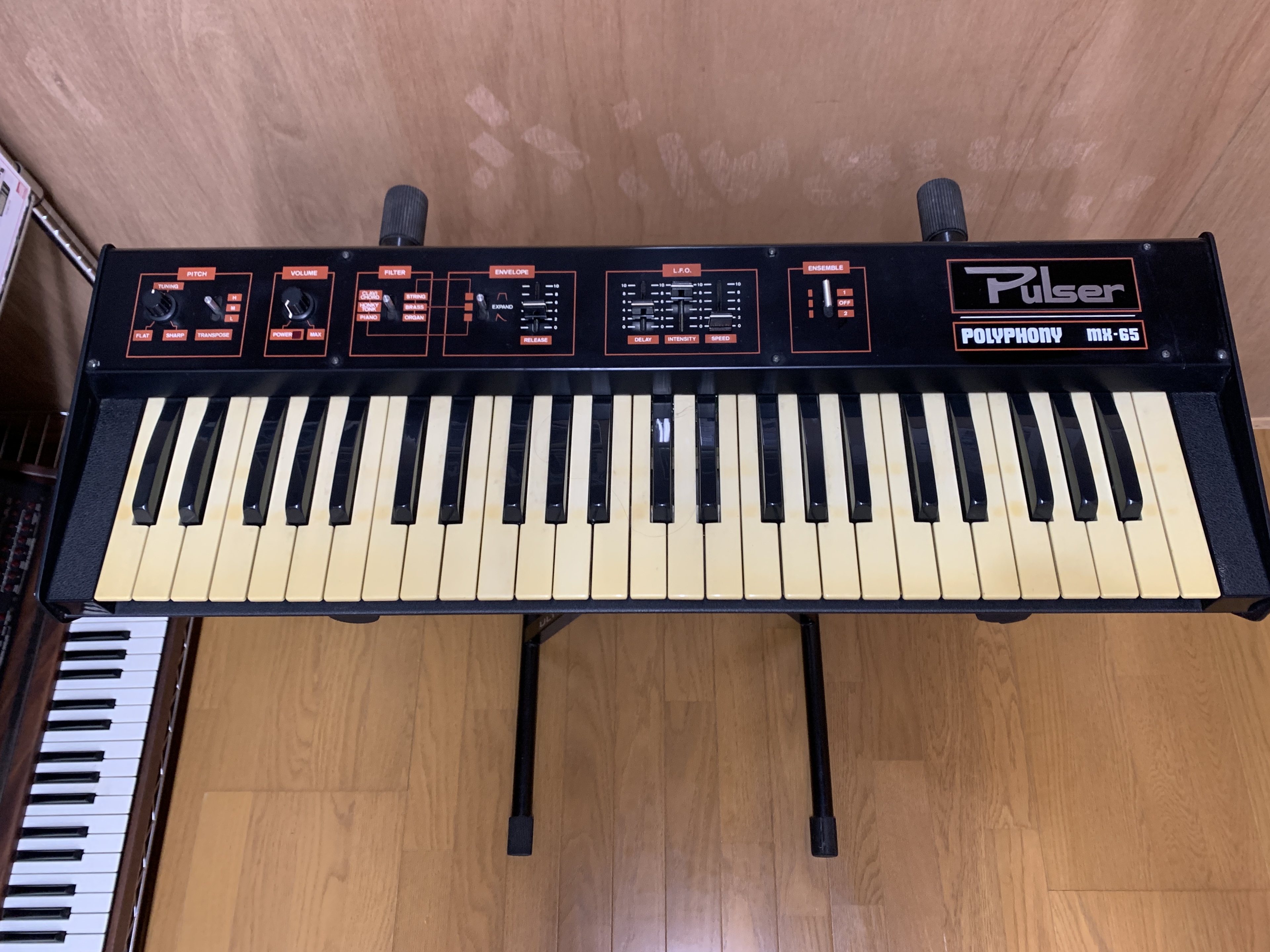
Because Yamaha had been using the name Pulser for its guitars, Morioka once again changed his company name—this time to Firstman, a play on the translation of his first name, Kazuo, in English. In keeping with the times, he released the four-voice polyphonic analog synthesizer FS-4V in 1981. This one combined a four-voice synth with an organ-style additive string section, an unusual choice for 1981. Also unusual was the plastic modulation bar, which ran just below the length of the keyboard. By pressing down on it like a bellows, you could modulate the VCO or VCF.

Morioka also dabbled in sequencers, with the keyboard-attached Multivox MX-8100 and Firstman SQ-01 both coming out in 1981. The SQ-01 is particularly interesting, as it combined a digital sequencer with a bass synthesizer and was released around the same time as Roland’s 303.
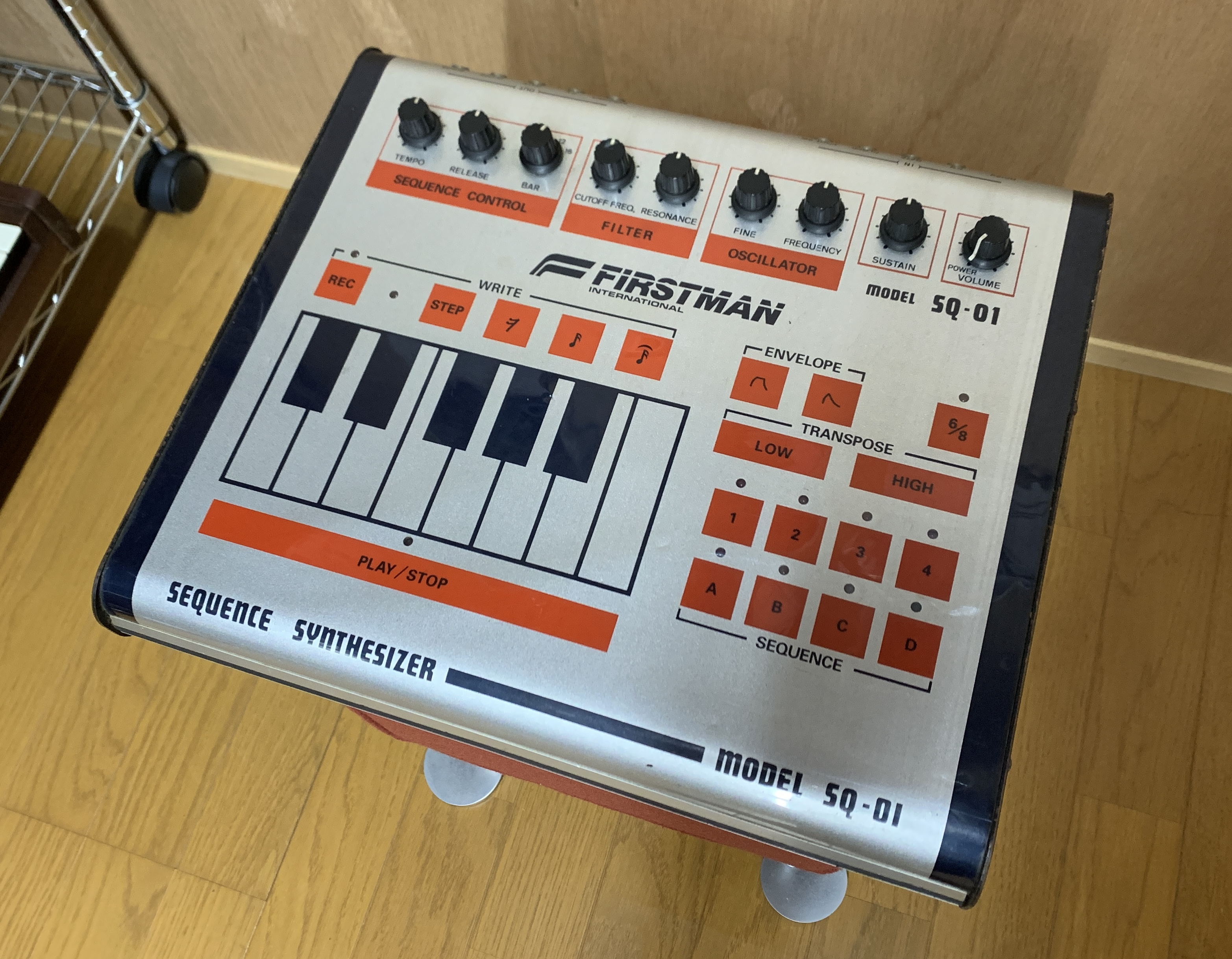
By the end of 1981, Firstman was out of business. Morioka later went to work for Akai, reportedly working in its analog synthesizer department.
Kawai and Teisco: Slow And Steady Wins The Race
In 1967, long-running Japanese piano company Kawai purchased Teisco, a homegrown brand for guitars, organs and other musical instruments. With surrounding companies releasing synthesizers left and right, Kawai decided to throw its hat into the ring, putting out its first product, the Synthesizer 100F, under the Teisco name in 1977.
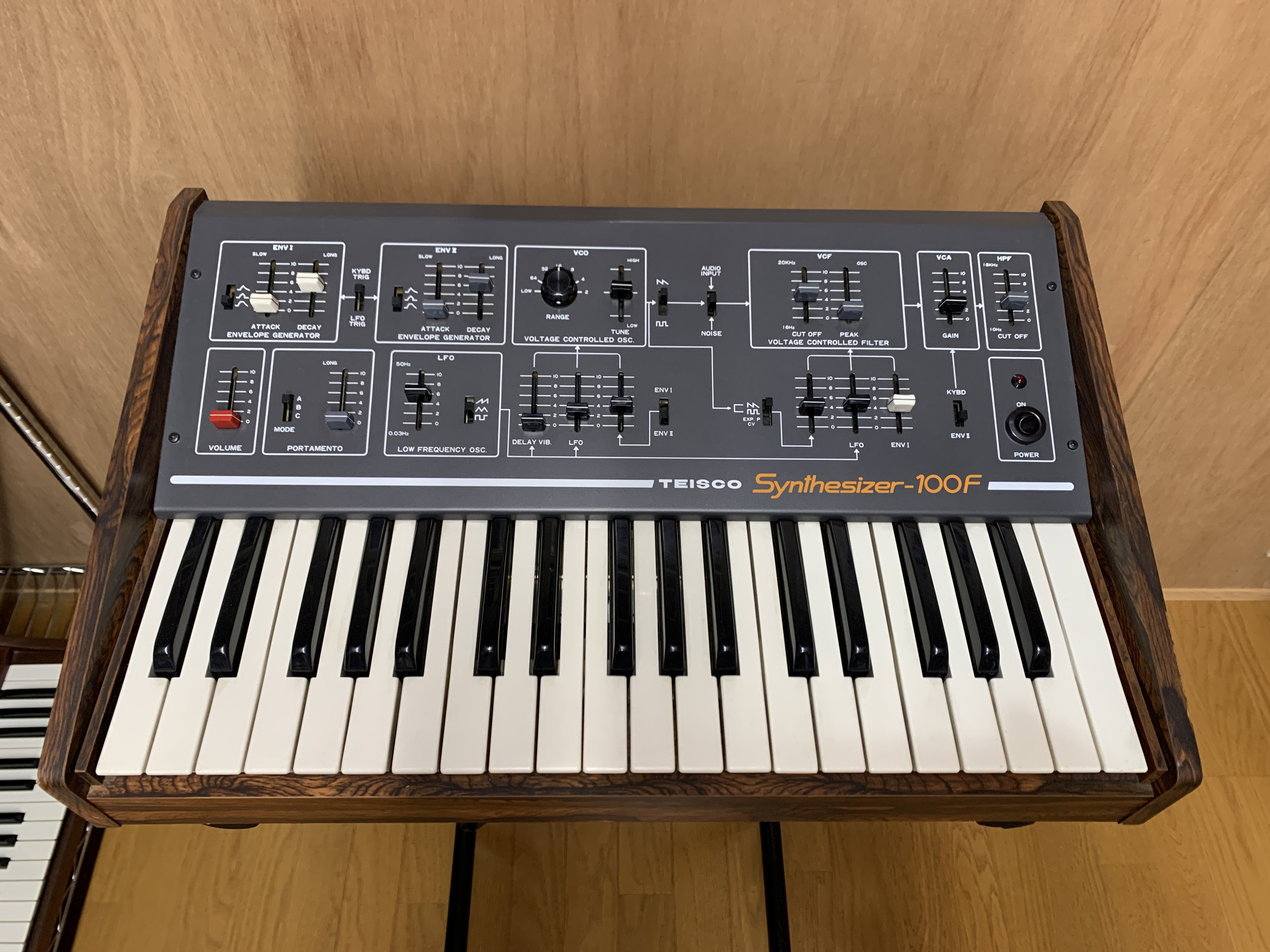
Also known as model number S-100F, the Synthesizer 100F was a single-oscillator monosynth with the usual complement of synthesis options plus some decidedly unusual ones, such as VCO modulation of the filter. The late 1970s was a synthesizer boom time in Japan, with the miracle economy climbing ever higher and higher. Many companies were hoping to part cash-flushed salarymen from their hard-earned yen, Kawai among them.
Its next release, the S-100P, was yet another preset synth with the usual mix of colorful tabs for sound selection and a number of parameters arranged on the left-hand side. It was a decent-sounding synth but what helped set it apart from other domestic preset players was the keyboard. Licensed from ARP, it had aftertouch, making it particularly expressive. It also had a rather high price tag which bucked Teisco/Kawai’s general trend of budget-priced keyboards. Either the company thought highly of it or it continued to sell, as it stayed in their catalogs for most of the Teisco synth era.
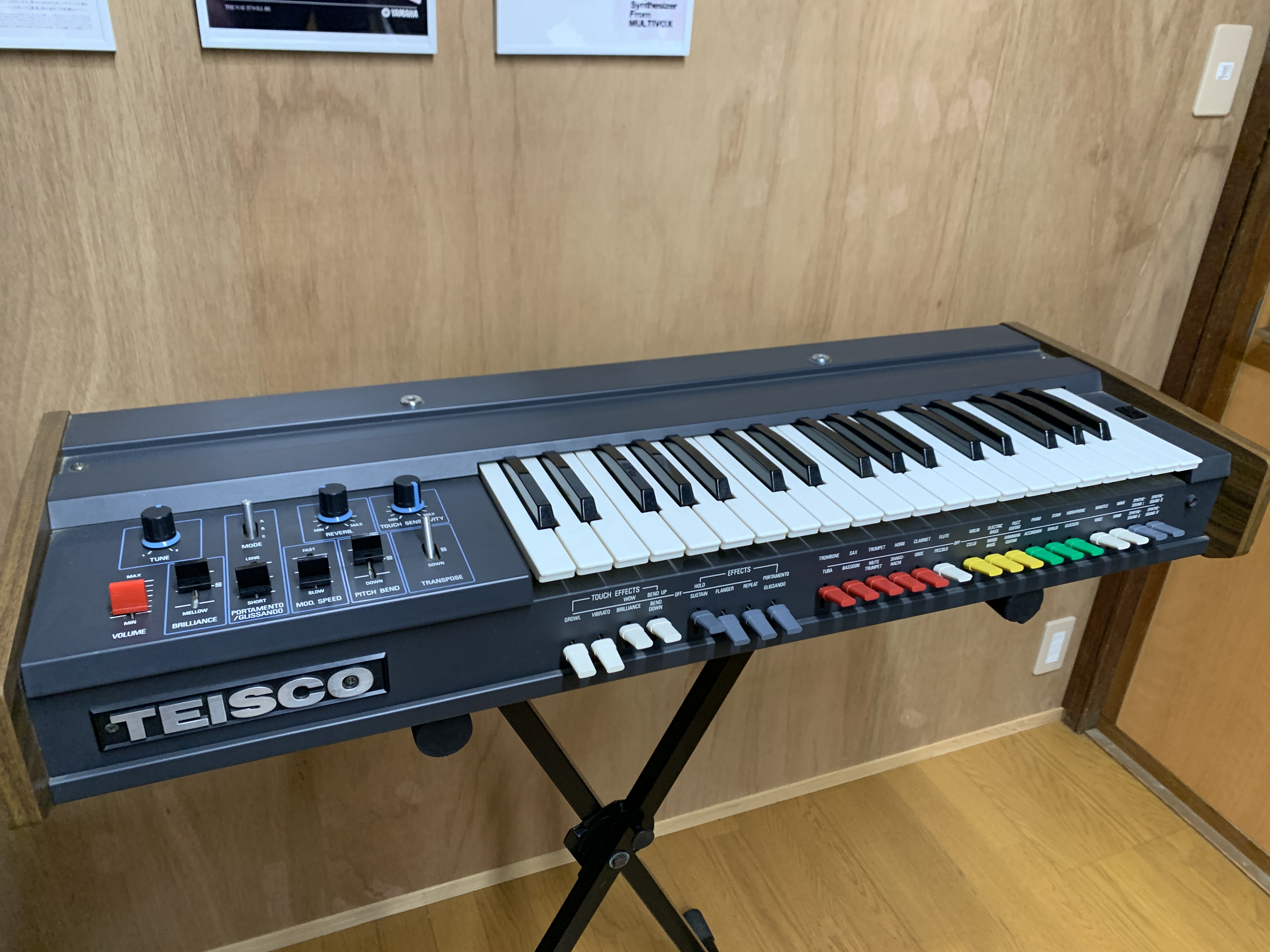
New models continued at a rapid rate, with the monophonic Synthesizer 60F and 110F coming in 1981. The next year, they debuted the 60P, a new preset synth with a decidedly home keyboard look.
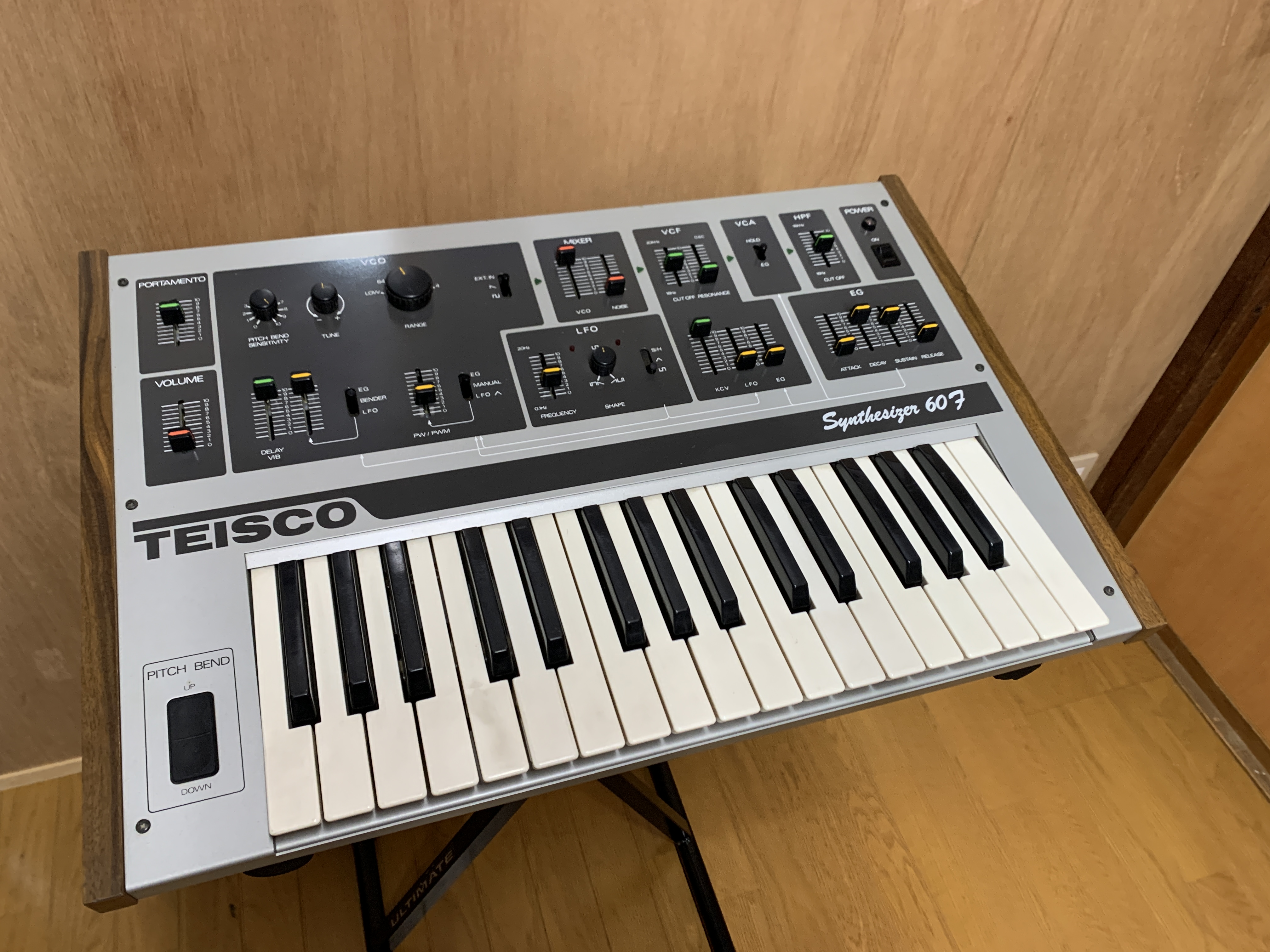

Kawai would continue using the subsidiary name until the early ‘80s, when it retired Teisco as a brand and forged ahead first into analog polyphonic territory and later with digital synthesis. They would eventually have a hit with the sample synthesis-powered K1, but that’s a story for another time. (For more on Kawai’s synthesizer history, please see our story, The Boundary-Pushing History of Kawai Synths.)
Ace Tone: The Post-Kakehashi Synths
Ikutaro Kakehashi famously founded Ace Tone in 1960, and then even more famously founded Roland in 1972. While most of the synth world’s attention has tended to focus on Roland’s output since then, Ace Tone still continued without Kakehashi through the 1970s. Its instruments were released in Japan as Ace Tone and also Nihon Hammond, and through Multivox overseas, with whom it had a distribution deal going back to the late 1965.
The best known Ace Tone synth is the PS-1000, which came out in 1974 and bears quite a few cosmetic similarities to Roland’s SH-3 and SH-3A synths. With the then-standard combination of keyboard on the right and control panel on the left, this monosynth had some unique touches, including an attack and release circuit on the VCA to complement the ADSR envelope generator, a dedicated high-pass filter as well as lowpass, plus buttons for oscillator footage and waveform selection rather than knobs.
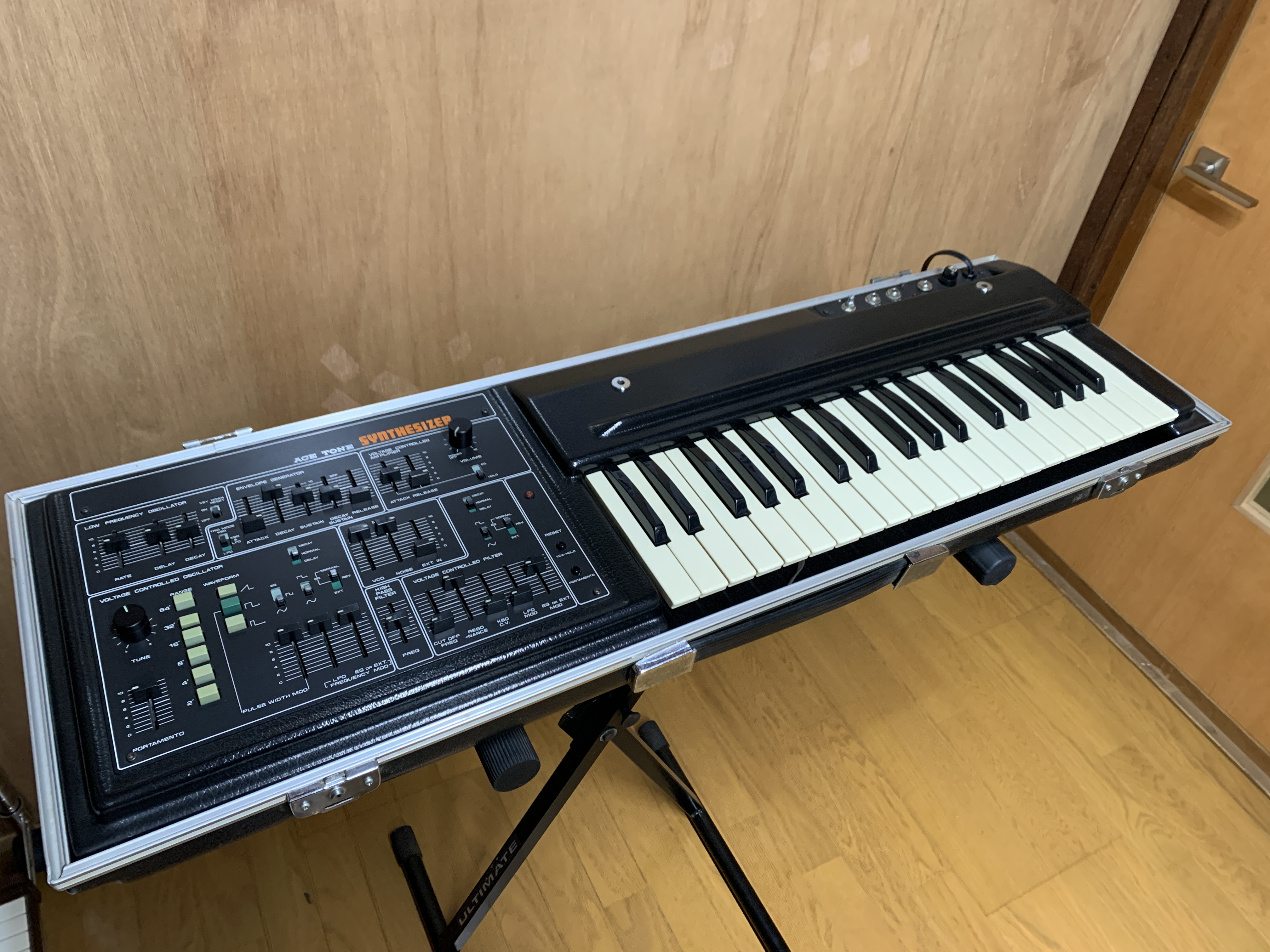
Ace Tone also released the SY-100 monosynth, Multistrings SY-5, and the Hammond 102200, a preset synth hybrid for Nihon Hammond with an unusual all-button parameter control center.
Hitachi and Technics: The Hi-Fi Synths
In 1978, Japan’s love for high-end audio equipment and synthesizers collided in two instruments, the Lo-D HMS-30 from Hitachi and Technics’ SY-1010. Sold at hi-fi stores and fitted with RCA jacks to connect to home stereo amplifiers, these were aimed at sound enthusiasts more than musicians.
The Lo-D HMS-30 was a strange beast, with a late-‘70s heavy wood cabinet and hi-fi-stylings similar to Yamaha. Although synthesizer signal paths had been largely set by 1978, the engineers at Hitachi really went crazy with the paraphonic two-voice Lo-D. They gave it not one but two separate synthesizer sections, each a complete voice with oscillators, filter, and envelope. They also gave it a rhythm section, a step sequencer, and patch memory—and stereo output, as it had to connect to a home audio system—it’s like someone crossed an Oberheim Two Voice with a stereo receiver. It also sold for a whopping ¥298,000. In modern US dollars, that’s a lavish $3500.
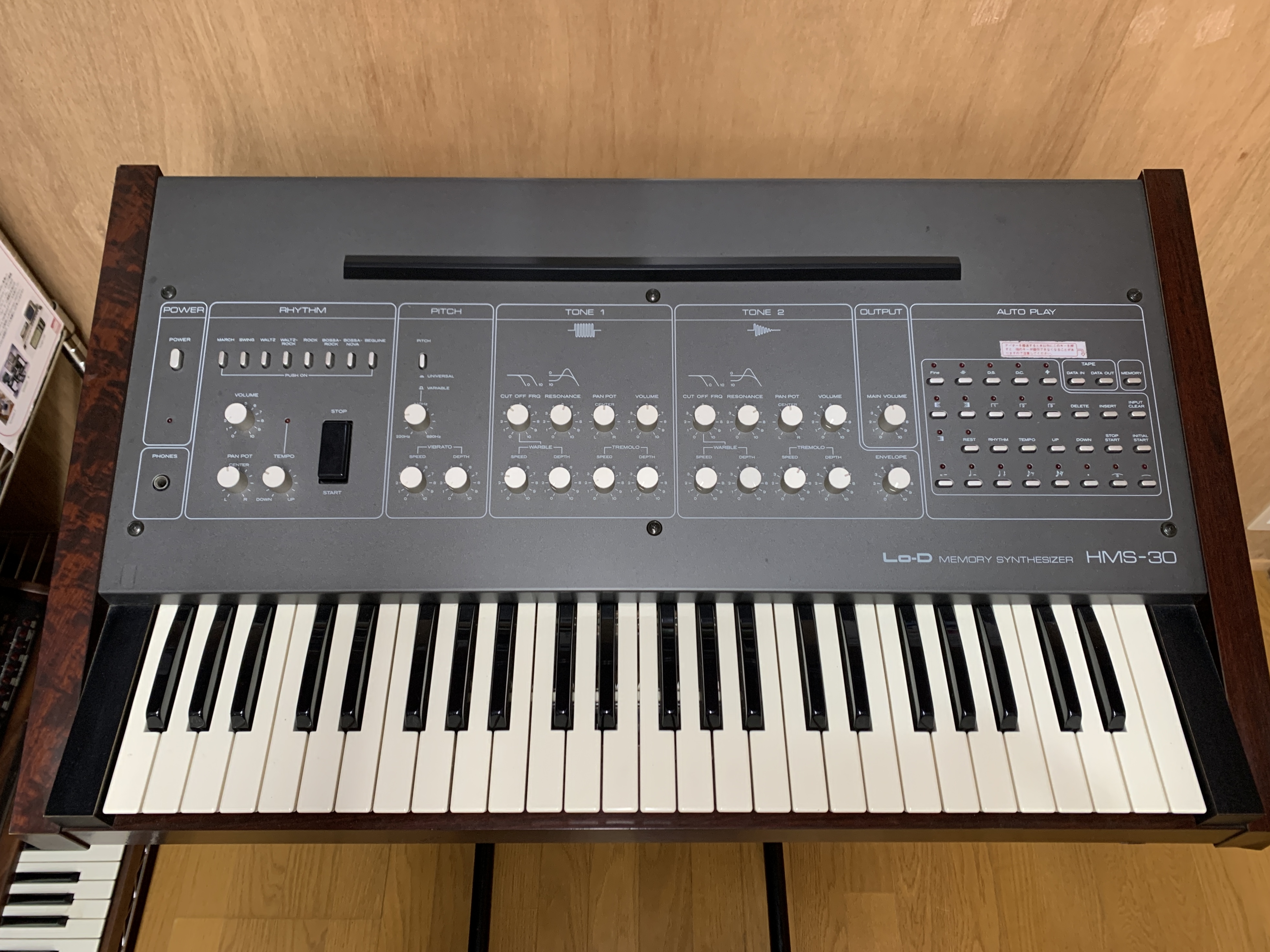
Over at Technics, the R&D department went in the opposite direction as Hitachi, developing the plasticky SY-1010. The single oscillator signal path is simplicity itself, with only a single waveform (sawtooth) to play with. The filter is rather lovely, and the addition of LFO control over the VCA is a nice extra. Although pricey by today’s modern manufacturing standards, at the time it retailed for around $950.
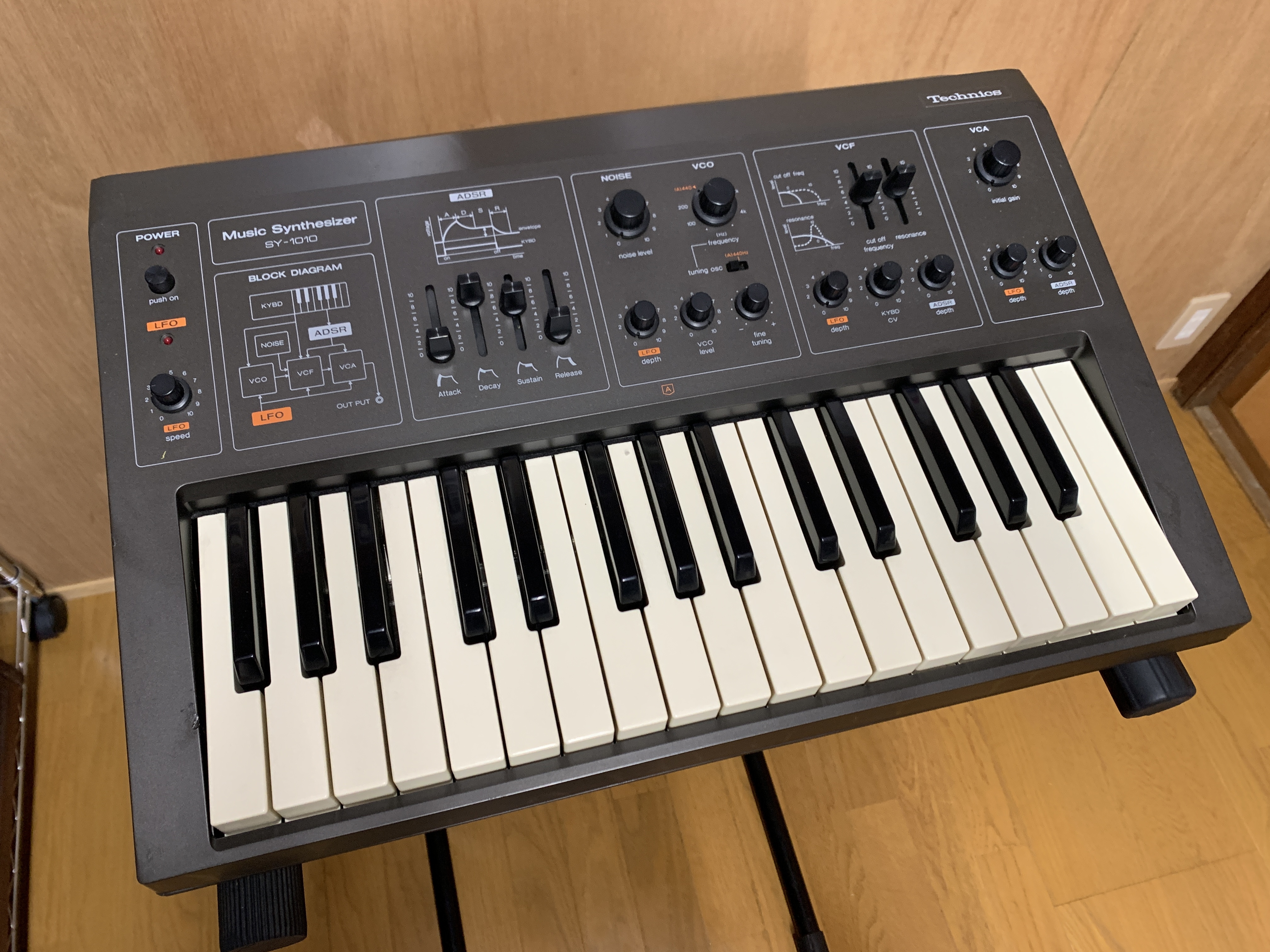
Shinko and Wave Kits: Do It Yourself
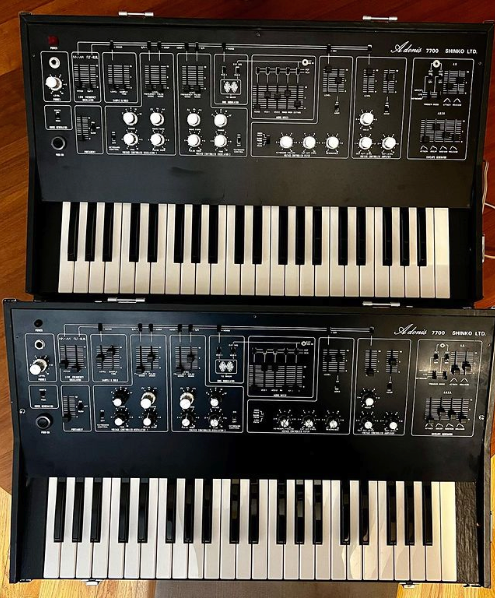
Synthesizers were prohibitively expensive in the 1970s. Unless you were a rich musician (or a hobbyist with plenty of cash to burn) your synthesizer dreams could only come true if you had built one yourself. This was as true in Japan as it was in other countries—while the US had PAiA and the UK had Transcendent, Japan had Shinko and Wave Kit. Not much is known about these two outfits, with their output especially rare, but a few catalog scans and even an extant synth or two attest to their existence.
Shinko offered a range of kits, including the tantalizingly-titled Music Synthesizer System SK-307, as well as the SH-3-like Adonis 2700 and Mini Adonis. Their crown jewel was the Adonis 7700, a two-oscillator monosynth with two LFOs, sample and hold, two envelopes, a VCA, VCF, ring modulator, mixer and noise. The kit sold for a reasonable ¥59,500, or around $700 in today’s money.
There are only two Adonis 7700s in existence that we know of. One is owned by Soundgas in the UK and the other belongs to Brandon Rogers, known by the Instagram handle @drumatix606. They’ve both been sent to Synthetic Dreamscapes for servicing, so hopefully we’ll be able to hear what they’re capable of. Interestingly, both of these have black panels although a Japanese book on synthesizers from the 1970s shows one with a light-colored panel.
Another company that sold DIY synths and other electronic instruments in the 1970s was Wave Kit. A scan of an advertisement from that time shows off their Micro Wave Synthesizer, a desktop synth, plus other tasty-looking treats like a digital sequencer, graphic equalizer, and “super effector.”
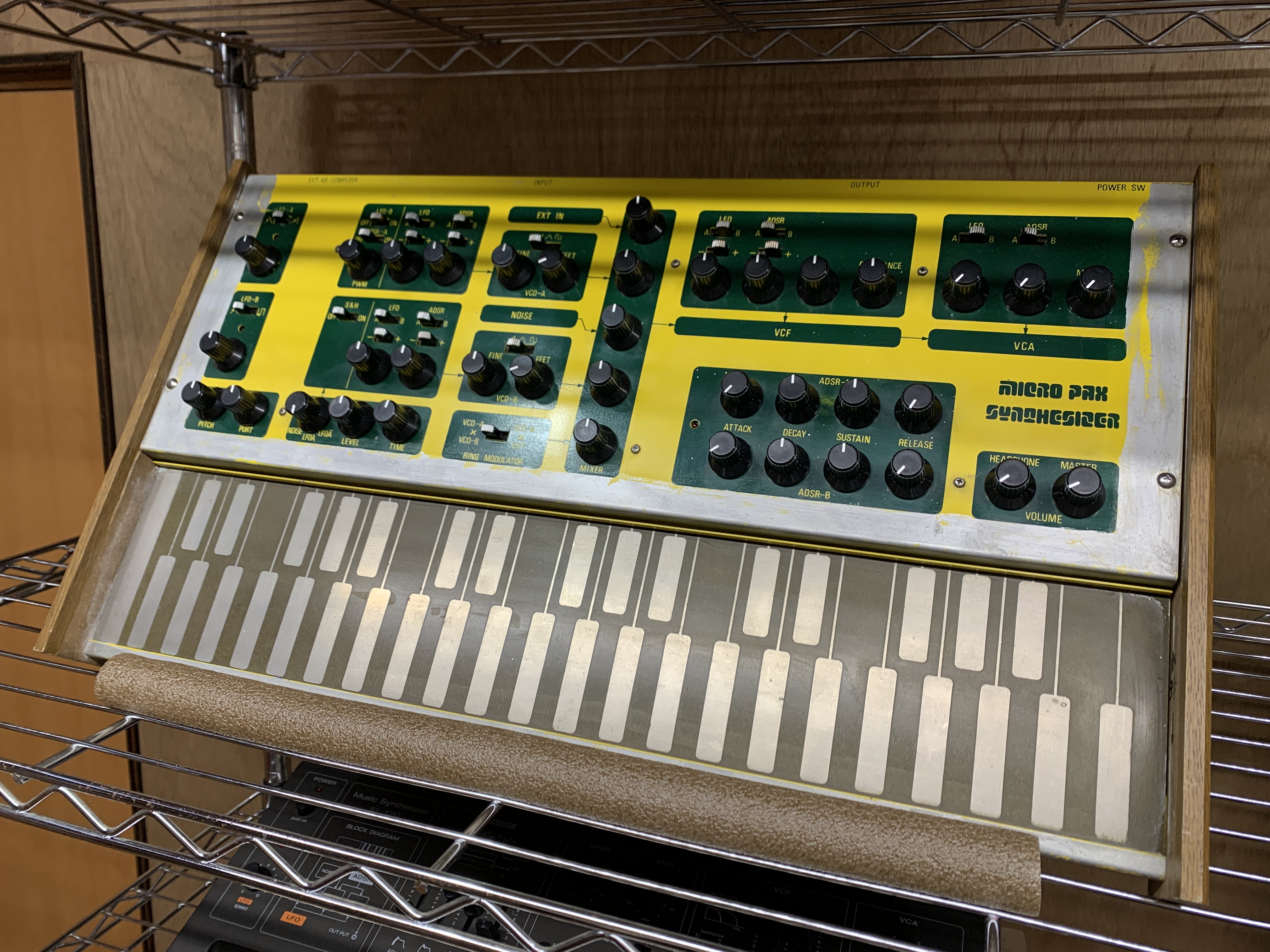
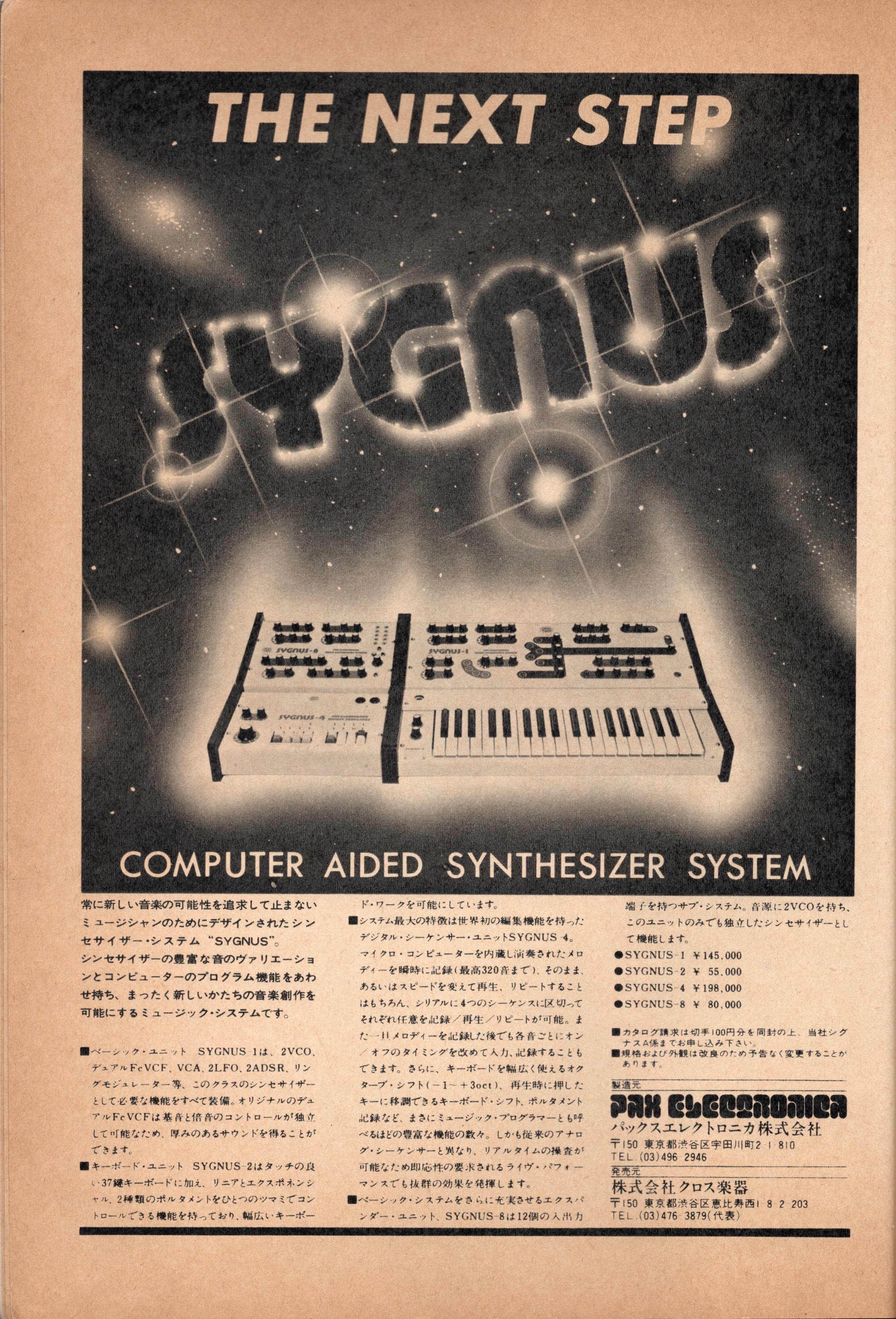
Pax Electronica: Lost In The Mists Of Time
And so we come to the really hazy part of Japanese synthesizer history, with few surviving instruments and only old catalog scans to guide us.
One of the more intriguing companies from the era was Pax Electronica. They made the Micro Pax, a two-VCO touchplate keyboard kit synthesizer. The company also offered a System-100-like Sygnus semi-modular set, with the main Sygnus 1, keyboard Sygnus 2, digital sequencer Sygnus 3, and expander Sygnus 8. The set was extremely expensive. Pax Electronica also manufactured a modular system, perhaps the only Japanese company offering modular synths other than Roland at the time.
Thank you to the Nakatsugawa Korg Museum for the invaluable assistance with this story. The museum is currently accepting visitors byt appointment. Please see their website if you’d like to make a reservation.
